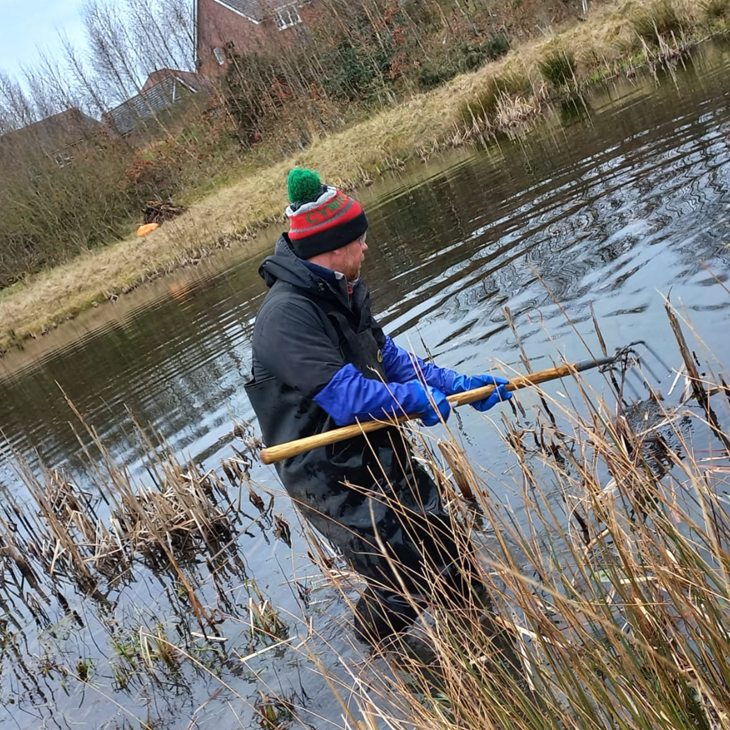Winter is a quiet season for wildlife on the reserves, but it’s one of the busiest times of the year for our dedicated Wild Ground staff and volunteers.

While many creatures hunker down to survive the colder months, our team springs into action, carrying out essential conservation work to maintain and enhance habitats for the coming year.
One of the most important winter tasks is pond management. As temperatures drop, amphibians leave the ponds, making it the ideal time to carry out maintenance with minimal disturbance to wildlife. You might spot team members donning waders and braving the cold waters to tackle one of the most persistent challenges: removing Typha, commonly known as bullrush or cattails.
Typha is a robust plant that, if left unchecked, can quickly dominate ponds, reducing the amount of open water and limiting biodiversity. It spreads through both seeds and underground rhizomes, meaning even a small patch can rapidly expand. Removing it is no small feat — to protect the delicate pond liners, the plant must be pulled by hand, root by root. It’s a labour-intensive process, but one that pays off by preserving the pond’s ecological balance.
Once removed, the Typha is stacked nearby to create habitat piles, which provide shelter and resources for various invertebrates and small mammals. This ensures that even the extracted vegetation continues to benefit local wildlife. A small percentage of Typha is deliberately left in the ponds to provide cover and nesting spots, but we follow expert guidance to keep emergent and floating vegetation below 60% of the pond’s surface area. This careful management helps create a diverse range of habitats, supporting everything from dragonflies and newts to aquatic plants and wading birds.
The task of pulling Typha is a true test of teamwork and endurance. For some volunteers, it’s a thrilling physical challenge — an opportunity to get up close with nature and make a visible impact. Others prefer to keep their boots on dry land, assisting with the post-clearance cleanup, ensuring that nutrients from decomposing vegetation doesn't leach into the ponds.
Winter pond work is a vital part of our year-round conservation efforts. It not only helps maintain the health of these aquatic ecosystems but also ensures that wildlife has a thriving environment to return to in spring. The dedication and hard work of our volunteers and staff during these chilly months are a testament to their commitment to protecting and nurturing local biodiversity.
Next time you visit the reserves, take a moment to appreciate the clear, open waters — and perhaps spare a thought for the team who spent their winter mornings waist-deep in icy ponds to make it all possible!
